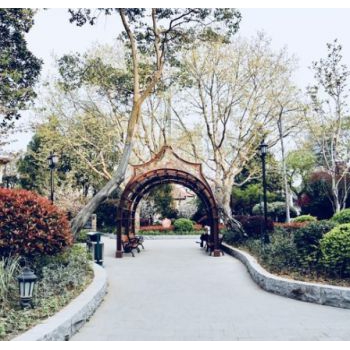百欧林简报- KSV NIMA LB膜分析仪ZX文献-2020年第2期
1. Name:Assessing the Interfacial Activity of Insoluble Asphaltene Layers: Interfacial Rheology versus Interfacial Tension
Authors:Alexandra Alicke, Sébastien Simon, Johan Sjöblom, and Jan Vermant
Journal:Langmuir
DOI: 10.1021/acs.langmuir.0c02234
Abstract:Asphaltenes have been suggested to play an important role in the remarkable stability of some water-in-crude oil emulsions, although the precise mechanisms by which they act are not yet fully understood. Being one of the more polar fractions in crude oils, asphaltenes are surface active and strongly adsorb at the oil/water interface, and as the interface becomes densely packed, solid-like mechanical properties emerge, which influence many typical interfacial experiments. The present work focuses on purposefully measuring the rheology in the limit of an insoluble, spread Langmuir monolayer in the absence of adsorption/desorption phenomena. Moreover, the changes in surface tension are deconvoluted from the purely mechanical contribution to the surface stress by experiments with precise interfacial kinematics. Compression “isotherms” are combined with the measurement of both shear and dilatational rheological properties to evaluate the relative contributions of mechanical versus thermodynamic aspects, i.e., to evaluate the “interfacial rheological” versus the standard interfacial activity. The experimental results suggest that asphaltene nanoaggregates are not very efficient in lowering interfacial tension but rather impart significant mechanical stresses. Interestingly, physical aging effects are not observed in the spread layers, contrary to results for adsorbed layers. By further studying asphaltene fractions of different polarity, we investigate whether mere packing effects or strong interactions determine the mechanical response of the dense asphaltene systems as either soft glassy or gel-like responses have been reported. The compressional and rheological data reflect the dense packing, and the behavior is captured well by the soft glassy rheology model, but a more complicated multilayer structure may develop as coverage is increased. Potential implications of the experimental observations on these model and insoluble interfaces for water-in-crude oil emulsion stability are briefly discussed.
Link:https://pubs.acs.org/doi/10.1021/acs.langmuir.0c02234
2. Name:Scaling Laws in the Dynamics of Collapse of Single Bubbles and 2D Foams
Authors:Claudia Dominguez, Marcos Fernández Leyes, Victor E. Cuenca, and Hernán A. Ritacco
Journal:Langmuir
DOI: 10.1021/acs.langmuir.0c02971
Abstract:Avalanches of rupturing bubbles play an importantrole in the dynamics of collapse of macroscopic liquid foams. Wehypothesized that the occurrence of cascades of rupturing bubblesin foams depends, at least in part, on the power released during therupture of a bubble. In this paper, we present results on thedynamics of single bubble bursting obtained by analyzing thepressure wave (sound) emitted by the bubble when collapsing. Wefound that the released energy varies linearly with bubble size, thefrequency of the emitted sound follows a power law with exponent3/2 (compatible with the Helmholtz resonator model) and theduration of a rupturing event seems to be independent of bubblesize. To correlate the dynamics of individual bubbles with thedynamics of foams, we studied the occurrence of avalanches onbubble rafts and found that the phenomenon appears to be a self-organized criticality (SOC) process. The distribution functions forthe size of the avalanches are a power law with exponents between 2 and 3, depending on the surfactant concentration. Thedistribution of times between ruptures also follows a power law with exponents close to 1, independently of the surfactantconcentration.
Link: https://pubs.acs.org/doi/10.1021/acs.langmuir.0c02971
3. Name:Features of formation of Langmuir monolayers of porphyrin derivatives on the surface of aqueous solutions of copper nanoparticles
Authors:N N Begletsova1, V N Mironyuk, A V Ezhov, A I Smirnova, N V Usol'tseva and E G Glukhovskoy
Journal:Journal of Physics: Conference Series
DOI: 10.1088/1742-6596/1697/1/012118
Abstract:Meso-aryl-substituted porphyrin monolayers were obtained by the Langmuir methoddepending on the aliquots applied to the water surface and the composition of the subphase.Regardless of the composition of the subphase (pure water or a solution with coppernanoparticles stabilized by surfactant) porphyrin compression isotherms showed the formationof monolayers until a film collapse state is reached. The presence in the subphase volume ofcopper nanoparticles stabilized by a surfactant (sodium dodecyl sulfate) contributed to theformation of a more stable porphyrin monolayer. A significant difference in the values of thesurface potential at the end of porphyrin monolayer compression depending on the compositionof the subphase is established. This fact is very promising in the context of creating filmheterostructures with improved operational properties.
Link:https://iopscience.iop.org/article/10.1088/1742-6596/1697/1/012118/meta
4. Name:Effect of the composition and temperature of the subphase on the surface potential of the Langmuir monolayer of 8CB liquid crystal
Authors:N N Begletsova, V N Mironyuk, S Santer, A I Smirnova, N V Usol’tseva and E G Glukhovskoy
Journal:Journal of Physics: Conference Series
DOI: 10.1088/1742-6596/1697/1/012112
Abstract:The effect of the composition and temperature of the subphase on the effectivedipole moment of the Langmuir monolayers of a liquid crystal 4-n-octyl-4′-cyanobiphenyl onthe surface of pure water and an aqueous solution containing copper nanoparticles was studied.It is shown that the presence of nanoparticles in the subphase leads to increase of the areaoccupied by the monolayer in the condensed state, increase of the collapse pressure, and reduceof the surface potential at the end of monolayer compression. The effective dipole moments ofliquid crystal molecules were calculated for monolayers formed under various conditions.
Link: https://iopscience.iop.org/article/10.1088/1742-6596/1697/1/012112/meta
5. Name:Fabrication of transparent polysiloxane coatings on a glass support via the sol-gel dip coating technique and the effect of their hydrophobization with hexamethyldisilazane
Authors:Michał Chodkowski , Konrad Terpiłowski , Sylwia Pasieczna-Patkowska
Journal:Physicochemical Problems of Mineral Processing
DOI: 10.37190/ppmp/126806
Abstract:This study aimed at synthesis, preparation, and physicochemical properties investigation ofundoped polysiloxane-based coatings deposited on the glass supports. The other goal was to test theeffectiveness of their hydrophobization with hexamethyldisilazane at an elevated temperature usinga bubbler. The coatings were obtained in a sol-gel process by acid-assisted hydrolysis oftetraethoxysilane and they were applied to the glass supports using the dip coating technique withvarious withdrawal speeds. The synthesized composition was scanned using TurbiscanLAB and itsparticle size was determined by means of the dynamic light scattering technique. The obtained surfaceswere examined based on the water wettability measurements, photoacoustic spectroscopy, andtransmittance measurements. It was found that the stability of the sol did not change during the dipcoating.Smooth, homogeneous, uniform, hydrophobic, and transparent coatings on the glass supportswere obtained. Their wettability was determined by the contact angle in the range from 83.5 to 95.2degrees and very low contact angle hysteresis. The hydrophobic effect obtained by modification withhexamethyldisilazane appears to be permanent - the contact angles do not change significantly after7 days. The synthesized sol composition appears to be a good starting point for its chemical and physicalmodification for hydrophobicity increase and surface properties modification. Moreover, thehydrophobization of the coatings with hexamethyldisilazane at an elevated temperature using thebubbler did not have the desired effect.
Link: http://yadda.icm.edu.pl/yadda/element/bwmeta1.element.baztech-93f04919-74a6-4526-a64c-70911571c66d
6. Name:Influence of amphotericin B on the thermodynamic properties and surface morphology of saturated phospholipid monolayer with different polar head at the air-water interface
Authors:Juan Wang , Hao Zhu
Journal:Colloids and Surfaces A: Physicochemical and Engineering Aspects
DOI: 10.1016/j.colsurfa.2021.126298
Abstract:Amphotericin B is not only a widely used antifungal drug, but also a potential novel immunotherapy anticancerdrug. But it has great side effects on human body due to its pore-forming activity on cell’s membrane. Someresearchers have found that AmB can form pores on the phospholipid monolayer in the absence of sterol.However, the effect of different polar heads of phospholipids on the pore-forming activity of AmB on themembrane is rarely reported. In this work, the influence of amphotericin B on the thermodynamic properties andsurface morphology of saturated phospholipid monolayer with different polar head at the air-water interfacehave been studied. The results suggested that the intermolecular force between AmB and DPPC or DPPE moleculeswas attractive but the force between AmB and DPPG or DPPS molecules was repulsive. No matter whatkind of phospholipid’s polar head, AmB can enhance the disorder of the AmB/phospholipid mixed monolayer.But at 30 mN/m, this effect of AmB from strong to weak was in the presence of PS head, PG head, PC head and PEhead. And the drug can induce the phase state of the phospholipid monolayer to change from LC phase to LC-LEphase at 30 mN/m. Differently, the shape and distribution of LC phase domains in the mixed monolayer film withnon-charged head group were different from that with negatively charged head group, which may be due to theintermolecular force between AmB and different phospholipid. The results are helpful to understand the influenceof AmB on the domains without sterols on cell membrane, to lay the foundation for the interaction between AmB and phospholipid-sterol binary model membranes in the further study and to provide a basis for understandingthe interaction between AmB and liposome materials.
Link:https://www.sciencedirect.com/science/article/pii/S0927775721001679
7. Name:Effect of Water on Crystallization and Melting of Telechelic Oligo(ε‐caprolactone)s in Ultrathin Films
Authors: Shivam Saretia, Rainhard Machatschek, Thanga Bhuvanesh, and Andreas Lendlein
Journal:Advanced Materials Interfaces
DOI: 10.1002/admi.202001940
Abstract:The thermal behavior of ultrathin, semi-crystalline films of oligo(ε-caprolactone)s (OCLs) with hydroxy or methacrylate end groups, is studied bythe Langmuir technique in dependence on mean molecular areas and crystallizationtemperatures. The films on solid substrate as obtained by Langmuir–Schaefer transfer exhibit different lamellar thicknesses, crystal numberdensities, and lateral sizes. The melting temperature of OCL single crystalsat the water and solid surface is proportional to the inverse crystal thicknessand generally lower than in bulk PCL. An influence of OCL end groupson the melting behavior is observed mainly at the air–solid interface, wheremethacrylate end capped OCL melts at lower temperatures than hydroxy endcapped OCL. Comparing the underlying substrate, melting/recrystallization ofOCL ultrathin films is achievable at lower temperatures at the air–water interfacethan at the air–solid interface, where recrystallization is not identifiable.Recrystallization at the air–water interface generally occurs at higher temperaturethan the initial crystallization temperature. The surface pressure, as anadditional thermodynamic variable, seems to further affect the crystallizationbehavior, with crystal thickness and lateral growth rate increasing with surfacepressure. The results presented here are important when designing temperature-sensitive or active nanostructured materials or interfaces based on OCL.
Link: https://onlinelibrary.wiley.com/doi/full/10.1002/admi.202001940?af=R
8. Name:Ion transport mechanism in gramicidin A channels formed in floating bilayer lipid membranes supported on gold electrodes
Authors: ZhangFei Su, Barbara Goodall, J. Jay Leitch, Jacek Lipkowski
Journal:Electrochimica Acta
DOI: 10.1016/j.electacta.2021.137892
Abstract:The ion channel properties of gramicidin A (gA) in a model floating bilayer lipid membrane were studied by electrochemical impedance spectroscopy (EIS) and polarization modulation infrared reflection absorption spectroscopy (PM-IRRAS). To determine if the transport of Na+ across the membrane is coupled with the transport of the counterion, fluoride and perchlorate anions were explored due to their large differences in hydration energy. The combined EIS and IR experiments demonstrated that in contrast to valinomycin, the mechanism of Na+ transfer through the gA channel is independent of the accompanying anion present in the supporting electrolyte. These studies also demonstrated that the conductivity of the gA sodium channel depends on the transmembrane potential and the IR measurements indicated that more gA molecules insert into the bilayer with the decrease of the transmembrane potential. The results of this present study demonstrate that the fBLM system is a suitable model bilayer for the in situ investigations of membrane-active peptides.
Link:https://www.sciencedirect.com/science/article/abs/pii/S0013468621001821
全部评论(0条)
推荐阅读
-

- 百欧林文献汇编—QSense石英晶体微天平-2023年第2期
- 瑞典百欧林科技有限公司为纳米尺度的表/界面研究和药物研发提供精确稳定的实验仪器及数据分析系统。
-

- 观展邀请:百欧林参展第十一届全国膜与膜过程学术报告会
- “第十一届全国膜与膜过程学术报告会(The 11th China Congress on Membranes and Membrane Processes,CCOM2022)”将于2023年7月15日
-

- 观展邀请:百欧林参展第十一届全国膜与膜过程学术报告会
- “第十一届全国膜与膜过程学术报告会”将于2023年7月15日-18日在四川成都世外桃源酒店举办。
①本文由仪器网入驻的作者或注册的会员撰写并发布,观点仅代表作者本人,不代表仪器网立场。若内容侵犯到您的合法权益,请及时告诉,我们立即通知作者,并马上删除。
②凡本网注明"来源:仪器网"的所有作品,版权均属于仪器网,转载时须经本网同意,并请注明仪器网(www.yiqi.com)。
③本网转载并注明来源的作品,目的在于传递更多信息,并不代表本网赞同其观点或证实其内容的真实性,不承担此类作品侵权行为的直接责任及连带责任。其他媒体、网站或个人从本网转载时,必须保留本网注明的作品来源,并自负版权等法律责任。
④若本站内容侵犯到您的合法权益,请及时告诉,我们马上修改或删除。邮箱:hezou_yiqi










参与评论
登录后参与评论